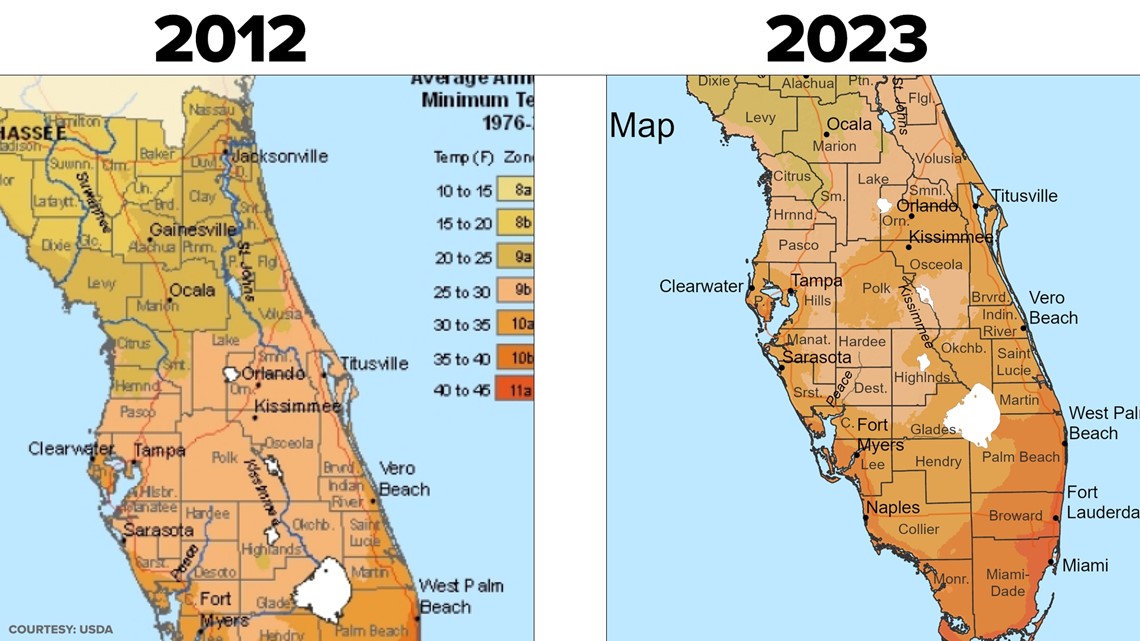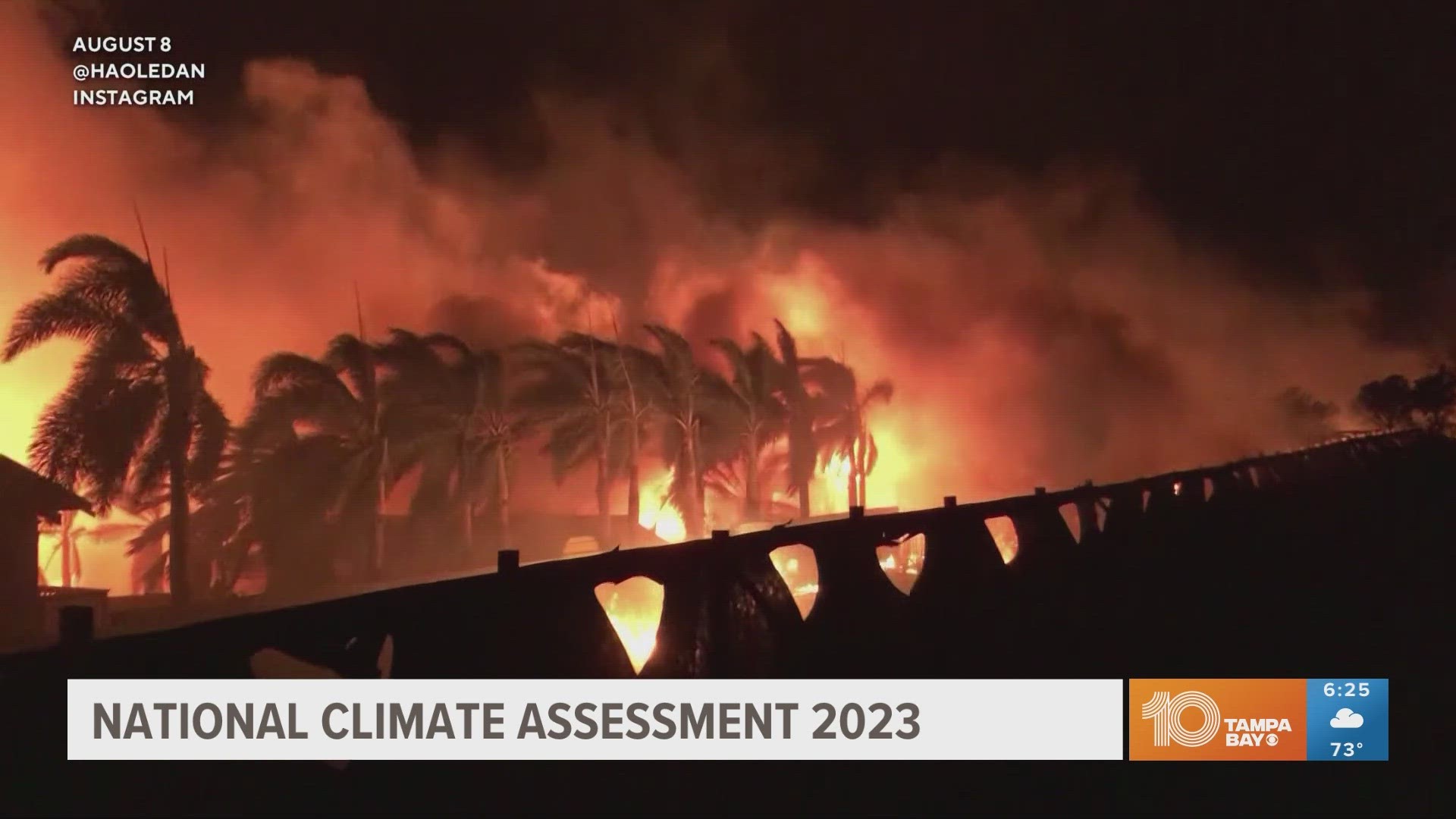ST. PETERSBURG, Fla. — If you've been feeling like it's been a lot hotter lately, you're not alone and now data is backing up those (sweaty) feelings.
While 2023 has been the hottest year on record, historical data showed a decent portion of the United States, including parts of Florida, has seen an increase in average "extreme" low temperatures. This data is seen through the U.S. Department of Agriculture's Plant Hardiness Zone Map (PHZM). This year, the map was updated; the last official update was back in 2012.
While the map is especially essential for gardeners, farmers and growers in order to know what kinds of plants will thrive in their local environment, it also shows how temperatures have evolved due to the effects of climate change.
The PHZM is based on "the average annual extreme minimum winter temperature." The 2012 map used historical data of the average annual minimum temperature from 1976 through 2005. The 2023 map uses data from 1991 through 2020.
When comparing the 2012 PHZM to the 2023 map, a large portion of the Tampa Bay area has changed zones.


For example, while all of Polk County used to be in Zone 9b back when the 2012 map was released, more than half of the county has been bumped up to Zone 10a. This means that Polk County used to see average minimum low temperatures between 25 to 30 degrees. Now, however, much of the county now sees 30 to 35 degrees during "extreme" winter weather.
Coastal areas in Citrus, Hernando, Pasco, Pinellas, Hillsborough, Manatee and Sarasota counties all saw a change to a hotter zone. Even parts of Highlands County experienced a change in a zone. Only Hardee County appears to be largely unchanged within the Tampa Bay area.
The good news — most of the Tampa Bay area was only bumped up to one zone level higher. The not-so-good news — the higher temperatures now being recorded along the Bay area's coastal regions could be impacted further by rising ocean temperatures.
According to The Associated Press, scientists say this year has been exceptionally hot in part because oceans have been warming, which means they are doing less to counteract global warming than in the past.
For those interested in checking out what PHZM zone they live in and to take a deeper dive into the data, click here to access the USDA's map.

